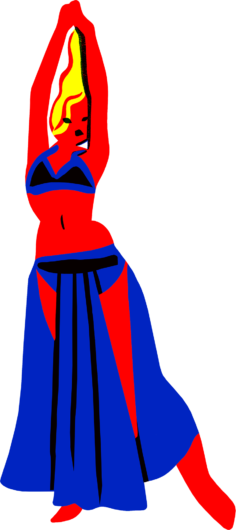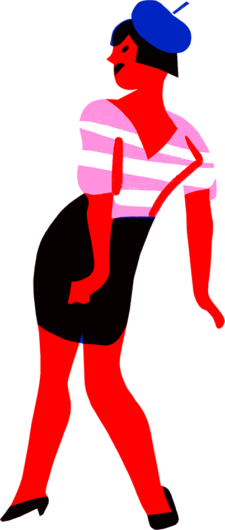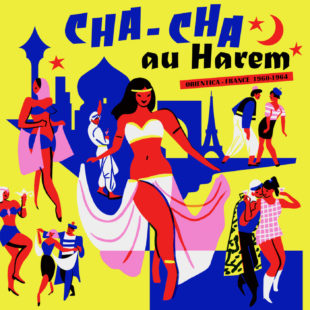
En 1963, Lawrence d’Arabie de David Lean rafle sept Oscars. Il propulse également au rang de stars les acteurs du film parmi lesquels Peter O’Toole ou Omar Sharif qui joue le Prince Ali Ibn Kharish à l’âge de trente ans. Ce dernier incarne en Occident une certaine idée de l’Orient à la fois insaisissable, raffinée et élégante. Son regard de braise, sa moustache impeccable et sa coupe de cheveux au cordeau n’y sont pas étrangers : l’acteur égyptien est un sex-symbol d’une époque fervente des aventures d’espionnage de James Bond et OSS117. Dans le désert jordanien, il fascine un public en quête d’ailleurs, de mille et une nuits. Cette appétence pour un exotisme chamarré et fantasmé, nous la retrouvons aussi dans la musique hexagonale des années soixante. Le pays qui a accueilli les premiers longs métrages en dehors de l’Egypte d’Omar Sharif (Goha, La Châtelaine du Liban) a ainsi produit une quantité délirante de musique d’inspiration latine ou orientale, regroupée derrière l’appellation « typique ».
La production typique a de quoi faire fuir les plus motivés et baroudeurs : des versions pléthoriques et souvent difficiles à distinguer, des interprètes anonymes (avec souvent les mêmes arrangeurs derrière) et assez peu de titres réellement marquants. S’aventurer dans les eaux mouvantes des orchestres provoquera à n’en pas douter des déconvenues mais, jaillissent ici et là, au milieu d’un vaste océan, quelques perles cha-cha-cha dans une veine cubaine ou orientale. Equivalents français des disques Exotica (Les Baxter, Yma Sumac, Martin Denny etc.) nord-américain fantasmant sur les Tikis Hawaïens et les iles du Pacifique, le cha-cha-cha oriental rêve d’Orient et d’Afrique du Nord. Aux cocktails à base de rhum dans des décors polynésiens, les Français préfèrent le couscous et le thé à la menthe. Il s’agit ainsi de traverser la Méditerranée et rejoindre le Maghreb tout proche ou la plus mystérieuse Anatolie. De l’Orientica en somme.

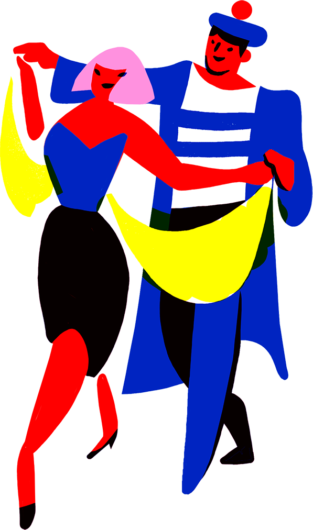
Le contexte est pourtant paradoxal : la décolonisation, notamment du Maghreb ne se fait pas sans heurts. Après le Maroc et la Tunisie en 1956, l’Algérie acquiert son indépendance en 1962 non sans laisser une plaie béante, encore en partie ouverte, des deux côtés de la Méditerranée. Les pieds-noirs rapatrient avec eux une culture mixte (plats, humour, etc.) dans les grands ensembles de région parisienne ou en Provence. La même année, la crise des missiles de Cuba est un moment paroxystique de la Guerre Froide. L’Europe est scindée entre les deux camps. Quand-est-ce que les Russes nous balanceront des ogives nucléaires ? Il y a aussi de quoi se réjouir et être optimiste. La croissance économique et le baby-boom en témoignent. La reconstruction bat son plein. Dans les foyers français, on rêve de tourisme et d’avion. Le moyen de locomotion est encore réservé à une élite mais, se développe rapidement. Le ciel français a été ouvert à la concurrence. Les caravelles, premiers avions biréacteurs civils produits en série, traversent ainsi l’espace aérien Le français découvre en voiture l’Italie, l’Espagne ; il se prend à imaginer des contrées ô combien plus lointaines.
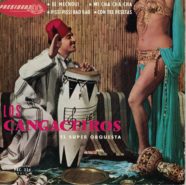
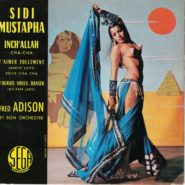
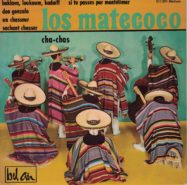
Les disques offrent ainsi aux quidams moyens une évasion bon marché sans se priver de quelques jeux de mots un peu olé-olé, histoire de rendre l’exercice un peu plus attrayant. Le samedi les jeunes adultes s’enjaillent dans les surprises parties sur des danses de salon (cha-cha-cha mais aussi boléro, foxtrot, tango), les distances sont chastes mais l’esprit plus coquin qu’il n’y paraît. On passe ensuite le dimanche à Orly pour entendre les Boeings chanter là-haut. La compilation Cha Cha au Harem offre ainsi une vision tendre de la France Gaullienne pré-révolution sexuelle. Tous les clichés sur les contrées exotiques y passent ; spécialités culinaires (couscous, café turc, baklava, etc…), danses orientales sensuelles, accents exagérés, mélopées envoutantes exécutées sur une gamme hongroise mineure par des instruments européens accompagnés de percussions plus évocatrices d’ailleurs lointains.
Au-delà de la carte postale, cette musique a quelque chose d’innocent et naïf, touchant à notre époque si cynique et prompte à juger instantanément. Bien arrangées, entrainantes, accrocheuses, les meilleures chansons du genre ont un charme délicieusement suranné. Bob Azzam, chanteur égyptien d’origine libanaise, lance la mode en 1960 avec Mustapha et Fais-moi du Couscous, Chérie. Le musicien démarre sa carrière à la fin des années cinquante en Italie mais, explose réellement en France avec ces deux chansons. Une vingtaine de 45 tours suivront, pas tous dans cette veine qu’il aura contribué à lancer mais dont il n’est peut-être pas le maître, en tout cas en termes de qualité et productivité. Le Calife du Cha-Cha-Cha oriental français vient de chez nous et s’appelle Léo Clarens. Omniprésent dans cette compilation, sous son nom de scène ou des emprunts (Kemal Rachid, Mohammed Ben Abd el Kader), l’arrangeur fait les beaux jours du genre. Né Louis Tiramani Coulpier à Marseille en 1923, le clarinettiste forme son premier orchestre au début de la Seconde Guerre mondiale. Bloqué pendant une partie de la guerre à Alger, il finit par être promu chef d’orchestre de la 2ème division blindée ! À la libération de Paris, il monte sur la capitale à la recherche d’engagements. Il enregistre ses premiers disques (des reprises de standards américains) pour le label Philips dans les années cinquante par l’entremise du célèbre Jacques Canetti, un des plus grands directeurs artistiques français de la variété du XXème siècle. En dehors des disques sous pseudonymes (Kemal Rachid, les Kili-Cats), le musicien marseillais devient un arrangeur prisé dans la variété, notamment pour Michel Sardou. Il assiste également Paul Mauriat de nombreuses années. Plus tard, dans les années soixante-dix, quatre-vingt, il travaille aussi avec Laurent Voulzy ou Jean Jacques Goldman.
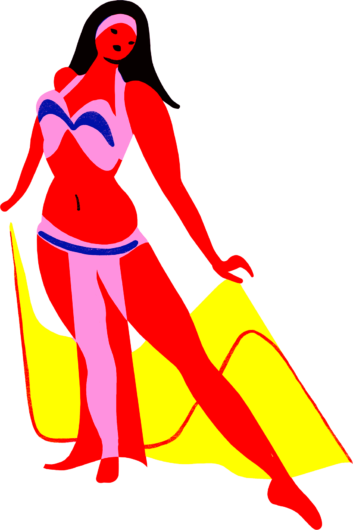
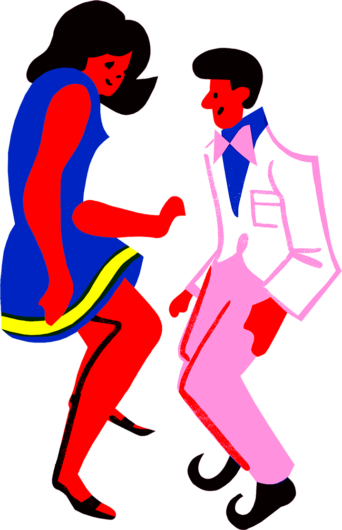
Léo Clarens n’est pas le seul, à donner dans le cha-cha-cha oriental, nombre de protagonistes typiques s’y jettent à corps perdus, souvent pour des résultats médiocres d’ailleurs mais avec quelques belles surprises telles que Benny Bennet ou Los Cangaceiros. Benny Bennett est un musicien américain d’origine vénézuélienne installé en France. Il enregistre de nombreux albums et 45 tours principalement pour Vogue à la fin des années cinquante et au début des années soixante. Batteur de jazz, il découvre les musiques cubaines par l’intermédiaire de sa première femme Cathalina. Dès lors, il enregistre mambos, calypsos, boléros et cha-cha-cha y compris dans leur variante orientale à travers les excellentes Couscous et Ismaëlia. Los Cangaceiros était un groupe installé à Paris sous la direction d’Yvan Morice. Au début des années soixante ils sortent quatre albums dont certains sont également publiés aux Etats Unis, ainsi qu’une douzaine de 45 tours. Sous son véritable nom, nous retrouvons Yvan Heldman à la fin des années soixante comme parolier de chansons dans différents films tels que Le Vicomte Règle Ses Comptes (1967). Nous lui devons ainsi le texte du classique garage de Dick Rivers (Le Vicomte). L’omniprésence des percussions et de la batterie sur Oriental Express donne quelques indications sur l’instrument de prédilection de Roger Morris : la batterie. En revanche, la littérature et internet sont avares en détails sur la carrière de l’intéressé. Tout au plus apprendra-t-on que le musicien a publié une demi-douzaine d’EP, essentiellement pour le label Homère, ainsi que deux albums, l’un typique du début des années soixante (Surprise Party 2) et un second de Library chez L’Illustration Musicale. La carrière de Raymond Lefèvre est de son côté nettement mieux documentée ! Le musicien que nous retrouvons ici grâce à sa réinterprétation du thème de Lawrence d’Arabie du grand Maurice Jarre (père de Jean Michel) à la sauce Boléro, est un habitué du petit écran, qualifié par un journaliste de France Soir de Karajan de Guy Lux ! Auteur de plus de 700 arrangements, nous le connaissons notamment pour sa participation à Bambino de Dalida ou à la musique du Gendarme de St Tropez.
Sur-ce, il est temps de vous installer tranquillement dans votre fauteuil club, avec une chicha (histoire de rester dans les clichés) et de découvrir Cha cha au Harem !
Alexandre Gimenez
///////////////////////////////////////////////
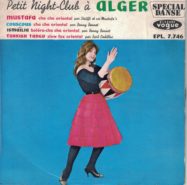
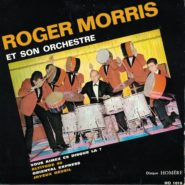
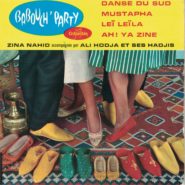
In 1963, David Lean’s Lawrence of Arabia won seven Oscars. Launching its actors to stardom, including Peter O’Toole and Omar Sharif who played Prince Ali Ibn Kharish at the age of thirty. The latter incarnated the West’s vision of the Middle East which was simultaneously elusive, refined and elegant. His fiery stare, impeccable mustache and immaculate haircut had something to do with it: the Egyptian actor was a sex symbol of an era passionate for James Bond and OSS117 spy adventures. In the Jordinian desert, he fascinated an audience that was in search of an escape and the thousand and one nights. This appetite for a colorful and fantasized exoticism, was also prominent in France’s music of the sixties. The country that welcomed Omar Sharif’s first feature films outside of Egypt (Goha, La Châtelaine du Liban) produced a delirious amount of music of Latin or Middle Eastern inspiration, grouped behind the genre named “typical” .
This “typical” production is enough to scare away the most motivated and adventurous of listeners: overabundant and often blurry versions, anonymous performers (often accompanied by the same arrangers) and only a few noteworthy songs. Venturing into the moving waters of orchestral music undoubtedly causes disappointment, but here and there, springing up in the middle of a vast ocean, one can find a few cha-cha-cha pearls played in a Cuban or Middle Eastern style. The French equivalent of Exotica records (Les Baxter, Yma Sumac, Martin Denny etc.) for North Americans who were fantasizing about Hawaiian Tikis and the Pacific Islands, the oriental cha-cha-cha fueled dreams of the Middle East and Northern Africa. To rum-based cocktails sipped in a Polynesian setting, the French were to prefer couscous and mint tea. Carrying them across the 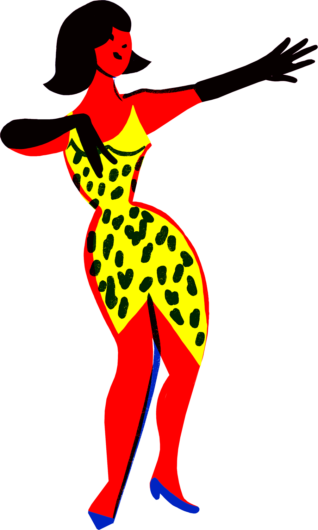
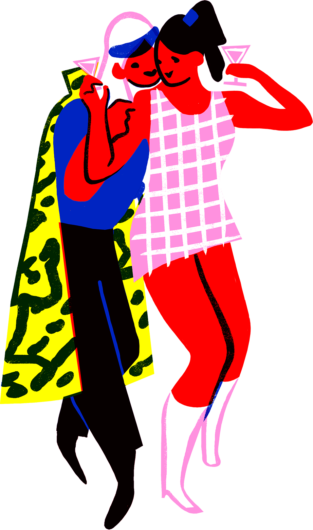
Mediterranean to nearby Maghreb and even further on to the more mysterious Anatolia. Orientica in short.
The context is somewhat paradoxical: decolonization, especially of the Maghreb was not an exactly smooth process. After Morocco and Tunisia in 1956, Algeria acquired its independence in 1962, leaving a gaping wound, still partly open, on both sides of the Mediterranean. Pied-noirs returning to the regions of Paris and Provence with a mixed culture (dishes, humor, etc.). The Cuban missile crisis took place that same year, a paroxysmal moment in the Cold War. Europe was split between two camps. “When will the Russians throw nuclear warheads at us”? But there was also reason to rejoice and be optimistic: the economic growth and baby boom. Reconstruction was in full swing. French families were dreaming of tourism and airplanes. A method of transportation that was still reserved for the elite was developing rapidly. The French sky had been opened to competition. Caravels, the first mass produced civilian twin-jet planes had entered the airspace. The French were discovering Italy, Spain by car and starting to dream of far more distant regions.
Records thus offered the average person an easy escape with an extra few puns in there and a little ole-ole, making the product all the more attractive. On Saturdays, young adults took part in ballroom dance parties (dancing the cha-cha-cha, bolero, foxtrot, tango), although physical distances were chaste the spirits were more mischievous than they appeared. Sundays were then spent at the airport, listening to the Boeings chanter là-haut (Boeings singing in sky). The Loukoum – Cha Cha au Harem compilation offers a tender vision of pre-sexual revolution Gaullian France. Including all the stereotypes on exotic countries; culinary specialties (couscous, Turkish coffee, baklava, etc.), sensual oriental dances, exaggerated accents, bewitching chants performed on minor Hungarian scales by European instruments accompanied by percussion of an unknown origin.
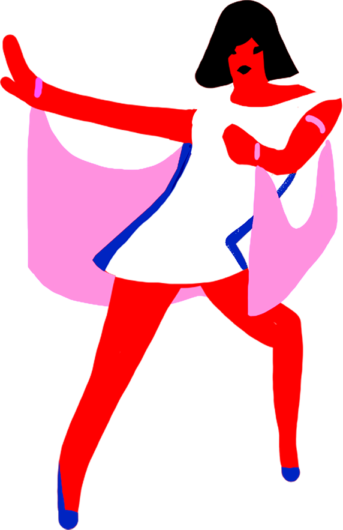
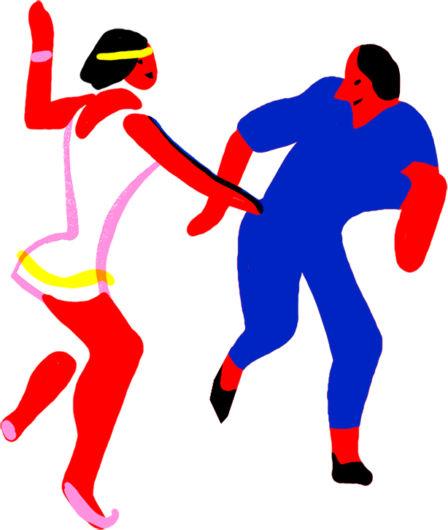
Aside from being a simple postcard, this music embodied a form of innocence and naiveté, both touching elements to access in these cynical and judgmental times. Catchy and tastefully arranged, the genre’s best tunes contain a delightfully old-fashioned charm. Bob Azzam, an Egyptian singer of Lebanese origin, made it popular in 1960 with Mustapha and Fais-moi du Couscous, Chérie (Make me Couscous, Darling). The musician who started his career in Italy in the late fifties really came to fame in France thanks to these two songs. About twenty LPs were to follow, not all as successful, maybe due to his sometime lack of mastery in terms of quality and productivity. Léo Clarens the French-born Caliph of Francophone oriental Cha-Cha-Cha is omnipresent in this compilation, under his various stage names. Born Louis Tiramani Coulpier in Marseille in 1923, the clarinetist formed his first orchestra at the start of the Second World War. Stranded during part of the war in Algiers, he ended up being promoted to conductor of the 2nd Armored Division! When Paris was liberated, he went to the capital looking for work. There, he recorded his first records (covers of American standards) for the Philips label in the 1950s thanks to the famous Jacques Canetti, one of the greatest French artistic directors of the 20th century. Apart from his recordings under various pseudonyms (Kemal Rachid, the Kili-Cats), the Marseille musician became a popular arranger, in particular for Michel Sardou. He also assisted Paul Mauriat for many years. Later on working with Laurent Voulzy and Jean Jacques Goldman in the seventies and eighties.
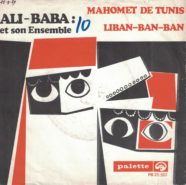
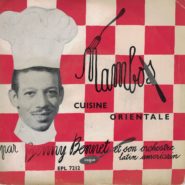
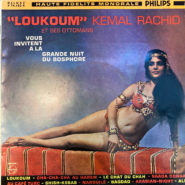
Léo Clarens was not the only one to give in to oriental cha-cha-cha. A number of musicians threw themselves to the task, most often with mediocre results, but with a few nice surprises such as Benny Bennet or Los Cangaceiros. Benny Bennett is an American musician of Venezuelan origin who lives in France. He recorded many albums and 45 rpms mainly for Vogue in the late fifties and early sixties. A jazz drummer, he discovered Cuban music through his first wife Cathalina. From then on, he recorded mambos, calypsos, boleros and cha-cha-cha including their oriental variations with the excellent Couscous and Ismaëlia. Los Cangaceiros were a Paris based band led by Yvan Morice. They released four albums in the early sixties some of which were also published in the United States, as well as a dozen 45 rpms. Under his real name, Yvan Heldman became a prolific lyricist for films such as Le Vicomte Règle Ses Comptes (1967). We can thank him for the classic Dick Rivers Le Vicomte song. The omnipresence of percussion and drums on Oriental Express gives us some indication of Roger Morris’ favorite instrument: the drums. However, literature and the internet are stingy with details on his career. At most, one can find out that the musician published half a dozen EPs, mainly for the Homère label, as well as two albums, one typical of the early sixties (Surprise Party 2) and a second, Library at L’Illustration Musicale. Raymond Lefèvre’s career was much better documented! Present on this compilation thanks to his reinterpretation of the Lawrence of Arabia theme written by the great Maurice Jarre (father of Jean Michel) in a Bolero style,he was a soundtrack regular. Composing over 700 arrangements, he was especially well known for his participation in Dalida’s Bambino and for the Gendarme of St Tropez soundtrack.
On that note, it’s time to sit back and relax in your lawn chair, smoke a hookah (to keep the clichés going) and discover Loukoum – Cha Cha au Harem!
Alexandre Gimenez
Translated by Amelie Rousseaux
